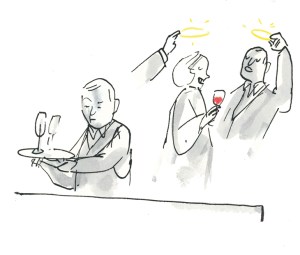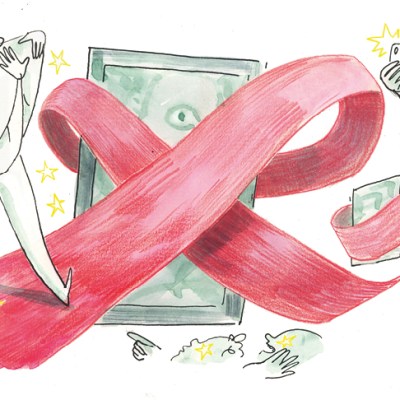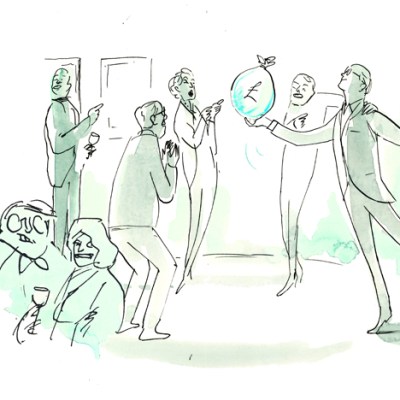In recent months, private sources of museum funding – from wealthy individuals and in the form of corporate sponsorship – have become the subject of increased scrutiny and concerted campaigns. What does the future hold?
Maxwell L. Anderson
American cultural institutions depend almost entirely on private support. The Republic was birthed with negligible governmental interest in funding the arts, and it has ever been thus. In 1831, Alexis de Tocqueville marvelled at the collective generosity guiding charitable works in a youthful nation. Beginning with the robber barons of the 19th century, gifts from even tainted sources have been central to cultural organisations.
Private philanthropy was spurred on by the Revenue Act of 1917, which introduced individual income tax deductions in exchange for charitable donations. Estate tax deductions for charitable bequests were added the next year, followed by corporate tax deductions in 1936. Favourable tax treatment greatly expanded the charitable sector, including the arts, and the system has operated with minimal disruption over time. Oil companies and cigarette-manufacturer Altria Group (née Philip Morris) were once leading arts contributors, eliciting grumbles but few boycotts until recently.
Simmering resentment within the creative industries about privileges and protections afforded the affluent has boiled over in the new gilded age of Donald Trump. In the wake of the #MeToo movement, scrutiny of allegedly ill-gotten gains by arts donors has followed. Social media has given voice to arts employees beyond the executive offices. Mounting antipathy to the fruits of a century-old system of tax-deductible patronage has produced self-reported data documenting compensation gaps, along with staff protests, unionisation, and calls for the resignation of trustees.
Would-be donors whose wealth derives from practices under fierce scrutiny may think twice about subjecting themselves to criticism or censure. Which leaves C-Suite leadership of museums in an uncomfortable situation. Side with their boards and risk the wrath of staff and the public. Show empathy with protests and incur the anger of their boards.
Arts support is already under pressure, with declining corporate giving and the near-evaporation of unfettered general operating grants from foundations. Suspicion is growing about the motivation of those giving to museums – are these individuals committed to free expression and abjuring art-market influence to buy or show particular artists, or are they in pursuit of tax deductions, social acceptance, and advance knowledge that could guide their own art investments?
The art world has long been driven by self-interest. What has changed is the willingness of aggrieved parties to call out what they see as feigned selflessness. Yet since 1917, the American system has rewarded philanthropy without regard to motivation. In the absence of new government-mandated covenants with respect to charitable donations (which would likely prove disastrous), the filters on accepting funds from individuals and corporations remain self-imposed, and limited only by conscience at one end of the spectrum or fear of criticism at the other.
There is one potential remedy for museums if they continue to hold on to or accept donations from even unsavoury quarters. Provided that they both spend those funds in furtherance of a widely embraced mission and invest the balance in accordance with enlightened principles, they might succeed in inoculating themselves. If their portfolios continue to be awash with stocks in petroleum companies, big pharma, and arms merchants, they will remain open to charges of hypocrisy. But if they change course to ensure that their use and investment of funds are guided by an ethical compass, they may weather the storm.
Museums must not only offer greater transparency about endowment practices, but also show a commitment to greater fairness in compensation, greater representative diversity among their staff, board, collection, and audience – and show the courage of their convictions when it come to programming. In the age of Twitter there is no going back to opacity. Museums are being held just as accountable as corporations, government, and individuals. While increased scrutiny is uncomfortable, it may in time help make a stronger case for arts support – provided that the would-be recipient shows itself to be deserving.
Maxwell L. Anderson is president of the Souls Grown Deep Foundation and Community Partnership and a past president of the Association of Art Museum Directors.
David Fleming
Illustration by Graham Roumieu/Dutch Uncle

Private museum funding may, at first sight, appear to be an oxymoron. Why on earth would private funding be available for non-profit organisations? The answer lies, of course, in the perceived value of association; in this case, the association of profit-making entities with the ‘truthful’ agencies that, to many people, museums are. There is, of course, nothing wrong with profit-making businesses giving money to museums. It may be that, at a time when public funds for organisations such as museums are shrinking, then private funding may be needed to ensure that museums are able to continue their important work. This tends to be the justification for museums becoming more and more reliant on commercial activities and private funds; money has to be found from somewhere, after all, and if it has been decided through our democratic systems that public funding should be reduced – as is the case at present in the UK – then an increasing reliance on private funding can hardly come as a shock.
The trouble is that some museums, but by no means all, have come to be associated with profit-making enterprises operating in extremely controversial circumstances. Into this category fall companies like BP, which makes money from the exploitation of fossil fuels, and those members of the Sackler family with an interest in Purdue Pharma, which makes much of its money from opioids.
Because of the controversial nature of these enterprises, protest against the acceptance of money from them by some museums has been loud and widespread. This by no means invalidates all private funding for museums, but it is making it more difficult for museums to justify the growth of such relationships. There is a risk that public opinion will turn against private funding of institutions that the public has been led to believe are purveyors of independent, unbiased versions of the world.
But not all private sources of funding are open to criticism. Indeed, it is the case that some sources are a lot less tainted than public funding, which is often far from transparent, accompanied as it can be by strings that are known to, though rarely acknowledged by its recipients. The example of the private funding of Argentina’s radical International Museum for Democracy (to which I am an adviser) ought to give pause for thought to those who believe that, somehow, public funding is always more accountable. This really is not always the case, and it may well be that in some instances private funding may prove to be a better guarantee of an organisation’s independence.
The truth is that, often, politicians overtly set the agendas for publicly-funded museums, and the museums thus funded dance – not so overtly – to the tune played by politicians. This happens in more instances than many museums would allow and is the explanation, in my view, of much otherwise inexplicable behaviour. If this is accountability, it is a stealthy kind, and it is by no means always preferable to private funding. All museum funding comes at a price. We don’t always know what that price is, however, and it may sometimes be less when it comes from a private source.
David Fleming was the director of National Museums Liverpool for 16 years, and is president of the Federation of International Human Rights Museums.
From the September 2019 issue of Apollo. Preview and subscribe here.



